Composition of laundry soap in Russia and the USSR: what are the differences
It is generally accepted that laundry soap is a relic of the USSR. But with the advent of new technologies, the product has changed a lot. Today, laundry soap is made from a variety of ingredients, both natural and not so natural. Find out how its composition has changed from ancient times to the present day.
Laundry soap in the USSR and now
Today in Russia, laundry soap is treated differently. Some people ignore it because of its specific smell, others love it for its ability to remove the most caustic stains. Old people are often treated with it, and mothers wash floors, dishes and wash their babies’ clothes.
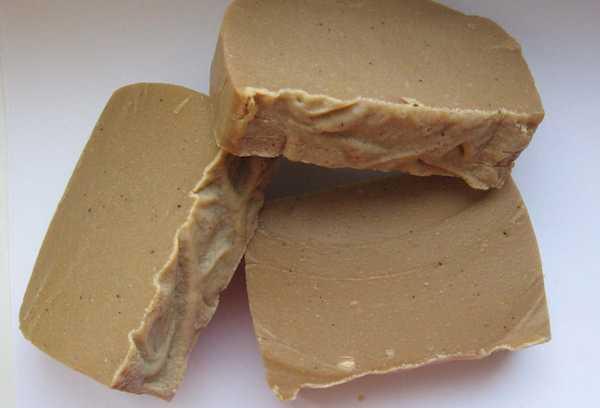
There are legends about the properties of laundry soap. For example:
- During the war, doctors soaped their hands before performing surgical operations.
- The fat of stray dogs is used to make the product.
- After washing with laundry soap, the hair becomes healthier and shiny.
- If you lubricate the nasal cavity with soap, you can cure sinusitis.
- Laundry soap saves you from rabies if you rub the wound from an animal bite in time.
- Treats thrush, gangrene, nail fungus and many other diseases.
True, much of what was written began to spread among the masses only in the last 20-30 years, when the USSR had already collapsed. New statements immediately appeared, saying that modern household soap has lost its miraculous properties due to the changed composition. There is some truth in the last statement.
Nowadays laundry soap is made from different raw materials than in the USSR.Technologies have changed. On the shelves you can often find soap in liquid form, of different sizes, shapes and colors.
The first laundry soap: what was it made from?
For the first time, laundry soap appeared not during the USSR, but much earlier. “Economic” means “used for economic needs.”
A special feature of this soap is its ability to effectively dissolve fat due to its fatty acid base.
Fatty acids are present, including in animal fat. Even in ancient times, women of Ancient Egypt and Greece, washing clothes in rivers, noticed that stains were washed off better in places of sacrifice. Then, presumably in 2800 BC. e. The first laundry soap was made in Babylonia.
Its composition was simple:
- animal fat;
- wood ash.
Animal fat was boiled with ash. Further, the recipe for laundry soap became more complicated. So in France, since 1688, they began to use:
- olive oil;
- salt;
- ash.
This type of laundry soap is called Marseille soap.
What was laundry soap made from in the USSR?
In Russia, until the end of the 19th century, soap as such was not made. Ordinary people used ash and other improvised means for washing clothes and cleaning. Our own soap production appeared during the Soviet era. The product became widespread after the end of World War II. At the same time, a rumor appeared that the soap was made from the fat of stray dogs.
In fact, Soviet soap makers took Marseille soap as a basis, but replaced vegetable fatty acids from olive oil with sunflower and animal fatty acids. They used fat that was not suitable for food purposes: pork, beef, lamb, fish.
The fat was repeatedly cleaned, bleached and deodorized. What was it made from before:
- sunflower and cottonseed oils;
- alkali;
- animal fats;
- fish fat;
- kaolin;
- rosin.
GOST for laundry soap in the USSR was changed several times. The first document (OST - all-Union standard) was published in 1926 in the "Bulletin of Standardization". It divided laundry soap into sound, glue and Eschweger (marble) soap.
The truth about Soviet laundry soap:
- The bars were greasy to the touch, light brown, with an intense, unpleasant odor.
- In the USSR, household soap was used to wash floors, do laundry, treat cracked heels, and disinfect dog and insect bites.
- It was the most common soap in the USSR. Toilet soap was much more expensive.
- Housewives mainly used baking soda to wash dishes.
- They washed their hands with laundry soap when they came from the street.
- Only a few people washed themselves with it completely, and only for the sake of economy.
- After the collapse of the USSR, the product became scarce, like many other goods.
Types and composition of modern laundry soap
Today on sale you can find laundry soap made in accordance with GOST (30266-2017) and TU. What is included in the composition according to GOST:
| Laundry soap category | 1 (72%) | 2 (70%) | 3 (65%) |
| Minimum amount of fatty acids per 100 g | 70,5 | 69 | 64 |
| Mass of caustic alkali,% | 0,15 | 0,15 | 0,2 |
| Raw materials | Fatty acids (hereinafter referred to as fatty acids) of technical lard, fatty acids. c. technical animal fat, distilled or non-distilled, 1st grade
|
The same fatty raw materials as for category 1-2 soap | |
| L. k. edible animal fat: beef, pork, lamb, prefabricated | L.K. technical animal fat, undistilled
|
||
| Distilled fatty acids of sunflower, soybean, cottonseed oil | L.K. Soap stocks of light vegetable oils and lards, undistilled | ||
| Technical salomas | Ennobled fuzz | ||
| L.c. synthetic fractions C10-C16, C17-C20 | Distilled petroleum acids | ||
| J. palm stearin | Tallow distilled oil | ||
| FA and palm oil fractions | Pine rosin A or tall rosin grade 1-2 | ||
| Palm kernel oil, its k. and factions | |||
| Palm oil | |||
| Coconut oil | |||
| L.K. Soapstocks of light vegetable oils, distilled lards | |||
| Refined soap stocks of light vegetable oils, animal fats and lards | |||
| Liquid mixture of rapeseed oil soapstock | |||
| Intermediate products from soap making | |||
| Technical and feed animal fat | |||
| Cocoa butter substitutes | |||
| Pine rosin A or tall rosin grade 1-2 (for category 2 soap) | |||
| Auxiliary elements | Caustic soda, table salt, soda ash, pigment titanium dioxide, hydrogen peroxide, zinc white, fragrances and additives that do not violate the requirements of the document | ||
Many people are mistaken in believing that products made according to GOST standards are the same as in the USSR. Thus, GOST 30266-95 for laundry soap was introduced in 1996 after the collapse of the USSR, and GOST, which is in force today, was introduced in 2019.
Solid in bars
Rough bars without packaging are very similar to laundry soap produced in the USSR. It is often made in accordance with GOST. The bars come in different colors and categories.
According to GOST, they must have a clear stamp:
- 72% (1 category). Color ranges from white to brown, or dyed.
- 70% (2 cat.). Color ranges from white to brown, or dyed.
- 65% (3 cat.). Hard, white to dark brown, possibly greenish or colored.
Laundry soap in paper or plastic packaging can be manufactured in accordance with GOST or specifications. It is often lighter and smells better.
There are the following types of household soap in packaging made according to specifications:
- with glycerin;
- whitening;
- universal;
- with the smell of lemon.
Its composition can be very different. For example, let’s indicate what the whitening soap TM “Ushasty Nyan” is made from:
- sodium salts of fatty acids of vegetable oils;
- glycerol;
- water;
- optical brightener;
- titanium dioxide;
- disodium salt EDTA;
- lemon acid;
- sodium carboxymethylcellulose;
- benzoic acid;
- triethanolamine;
- PEG-400;
- sodium chloride.
Liquid and powder
Nowadays, liquid and powdered laundry soaps are increasingly being produced (according to the specifications established by the manufacturer). The liquid product is used for washing floors and dishes, and the powder is used for washing. Such products may contain a variety of ingredients.
For example:
- 30% natural soap;
- 5% soda;
- 5% glycerin;
- 5% sodium chloride.
Or:
- soap base;
- surfactant;
- sodium chloride;
- dye;
- preservative
Questions and answers
What is the best laundry soap?
The best is considered to be 72 percent laundry soap, made from natural animal or vegetable fat, and not from substitutes and chemicals.
Is it possible to wash your hair with laundry soap?
No. Khozmylo contains a lot of alkali, which destroys the protective layer on the skin and hair.
To summarize, laundry soap in the USSR and in Russia are completely different products. They have a different composition, appearance, and shape. But there is something in common between them. Both old Soviet and new modern laundry soap have one purpose - to be used for household purposes. They cope with their direct task equally well: they wash stains on clothes, clean the house, and kill bacteria. For another purpose, for example, medicinal, it is dangerous to use a modern product.This was the case in Soviet times, but then the choice of medications was not so wide.
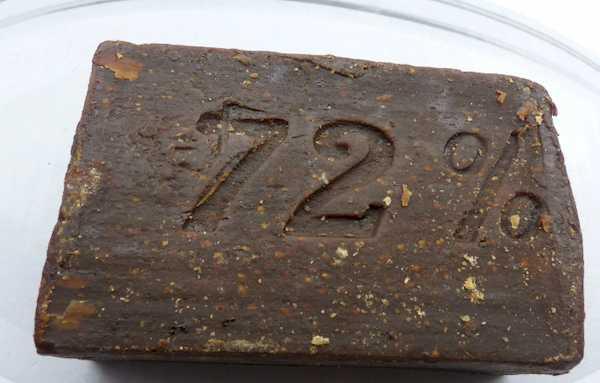
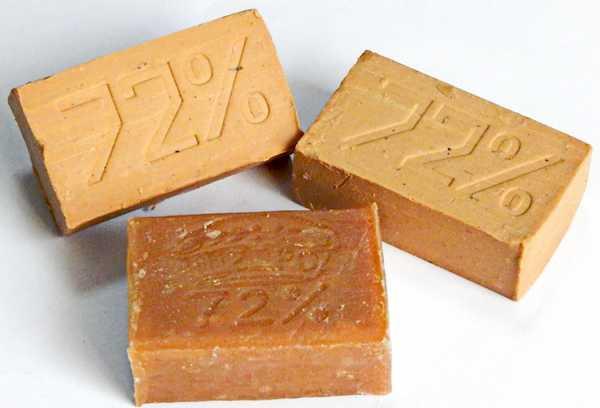
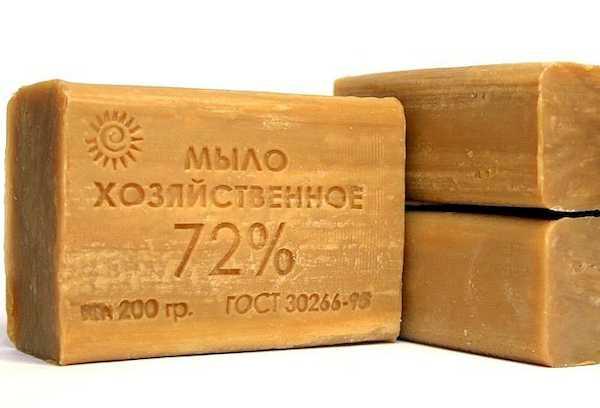
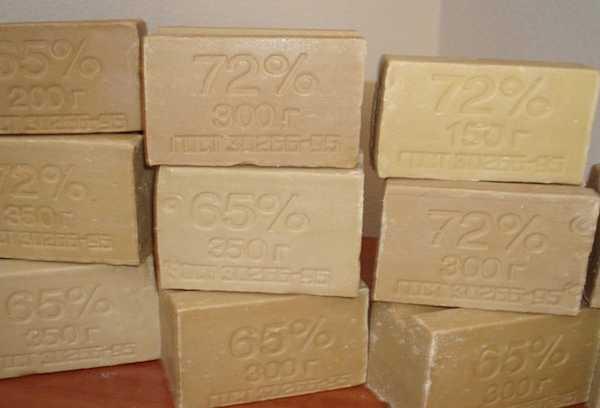
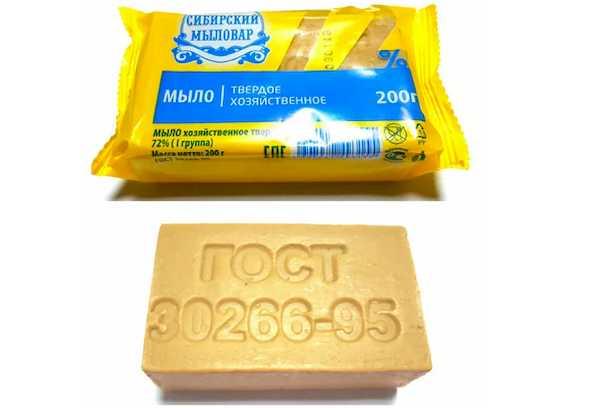
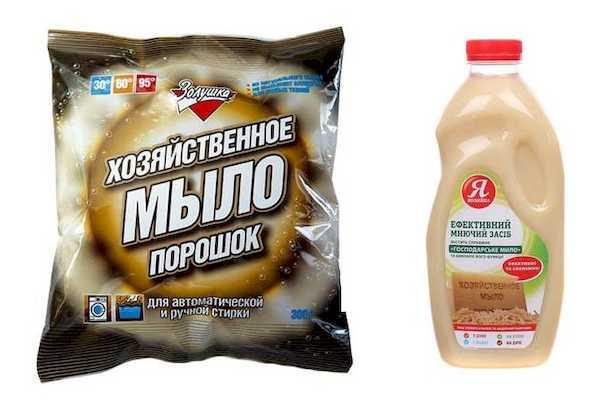
During the Soviet era, workers in production facilities washed themselves after work with household soap at least 5 times a week. And everything was fine..